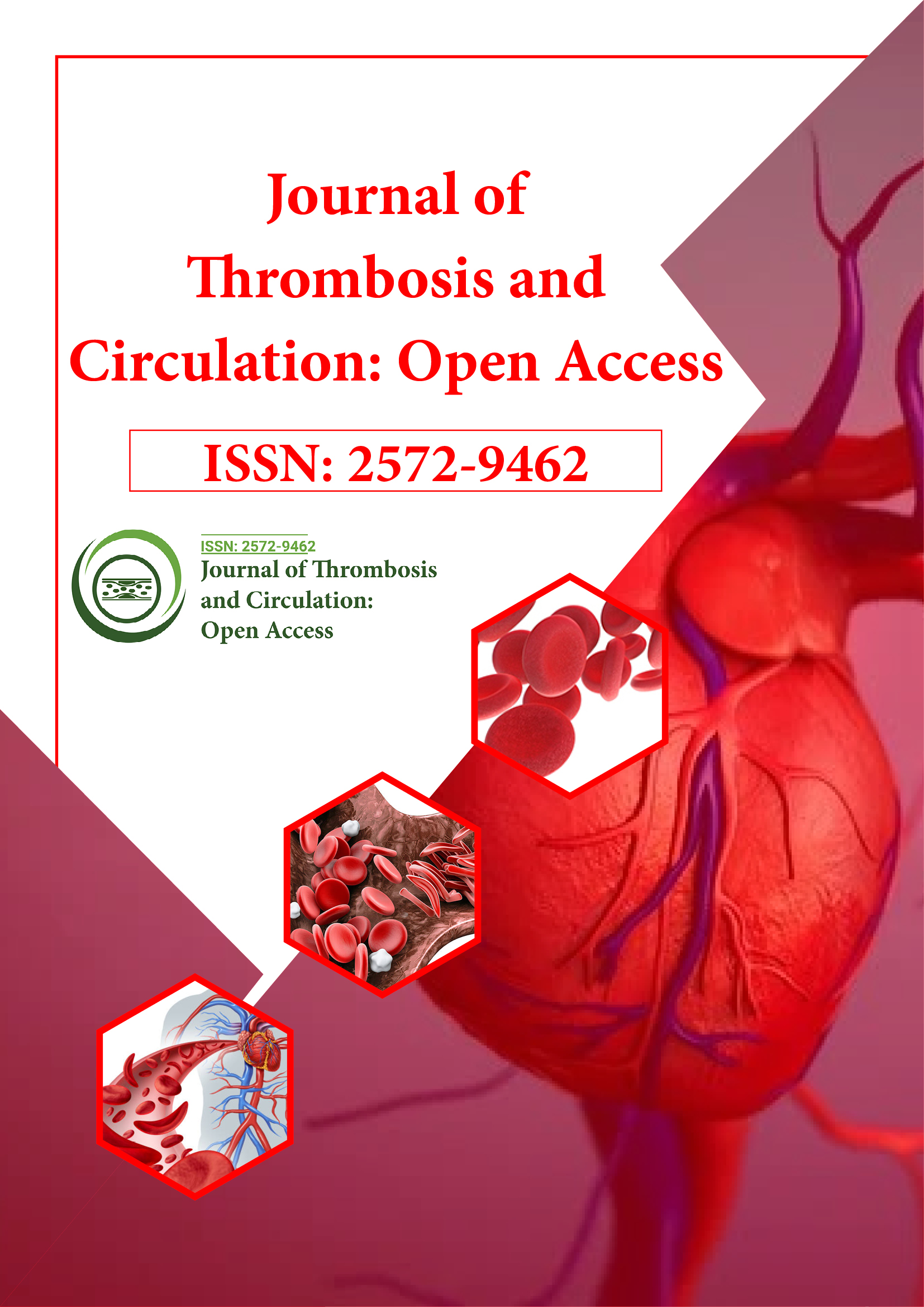Indexed In
- RefSeek
- Hamdard University
- EBSCO A-Z
- Publons
- Google Scholar
Useful Links
Share This Page
Journal Flyer

Open Access Journals
- Agri and Aquaculture
- Biochemistry
- Bioinformatics & Systems Biology
- Business & Management
- Chemistry
- Clinical Sciences
- Engineering
- Food & Nutrition
- General Science
- Genetics & Molecular Biology
- Immunology & Microbiology
- Medical Sciences
- Neuroscience & Psychology
- Nursing & Health Care
- Pharmaceutical Sciences
Perspective - (2025) Volume 11, Issue 1
Circulation in Health and Disease: Clinical Perspectives
Omri Cohen*Received: 21-Mar-2024, Manuscript No. JTCOA-24-25207; Editor assigned: 23-Mar-2024, Pre QC No. JTCOA-24-25207 (PQ); Reviewed: 07-Apr-2024, QC No. JTCOA-24-25207; Revised: 24-Feb-2025, Manuscript No. JTCOA-24-25207 (R); Published: 03-Mar-2025, DOI: 10.4172/2572-9462.25.11.300
Introduction
Circulation, the continuous movement of blood throughout the body, is a fundamental process vital for sustaining life. It serves as the lifeline, delivering oxygen, nutrients, hormones, and immune cells to tissues while removing metabolic waste products and maintaining homeostasis. This intricate system involves the heart, blood vessels, and blood itself, working together seamlessly to ensure proper distribution and exchange of substances essential for cellular function.Description
The anatomy of circulation: At the core of circulation lies the cardiovascular system, comprising the heart and blood vessels. The heart, a muscular organ located in the chest cavity, functions as the pump responsible for propelling blood through the circulatory system. It consists of four chambers: Two atria that receive blood and two ventricles that pump blood out of the heart.
Blood vessels form an extensive network that facilitates the flow of blood to and from various tissues and organs. Arteries carry oxygen-rich blood away from the heart to the body, branching into smaller arterioles before reaching capillaries, where gas exchange and nutrient delivery occur. Veins then transport oxygen-depleted blood back to the heart, completing the circulation cycle.
The mechanics of circulation: Circulation relies on a combination of cardiac function and vascular dynamics to ensure optimal blood flow. The cardiac cycle, consisting of systole (contraction) and diastole (relaxation) phases, drives the rhythmic pumping action of the heart, generating the pressure needed to propel blood through the circulatory system.
Blood pressure, the force exerted by circulating blood against the walls of blood vessels, plays a crucial role in regulating circulation. It is influenced by factors such as cardiac output, vascular resistance, and blood volume, all of which are tightly controlled to maintain adequate tissue perfusion and organ function.
Regulation of circulation: The body employs various mechanisms to regulate circulation and adapt to changing physiological demands. Autonomic nervous system control, mediated by sympathetic and parasympathetic pathways, modulates heart rate and vascular tone in response to stimuli such as exercise, stress, and temperature fluctuations.
Additionally, hormonal regulation, orchestrated by substances like adrenaline, noradrenaline, and vasopressin, fine-tunes cardiovascular function to maintain hemodynamic stability. Renin- Angiotensin-Aldosterone System (RAAS) and Atrial Natriuretic Peptide (ANP) also play key roles in regulating blood pressure and fluid balance.
Clinical relevance of circulation: Disruptions in circulation can have profound implications for health, leading to conditions such as hypertension, coronary artery disease, and heart failure. Diagnostic tools like Electrocardiography (ECG), echocardiography, and blood pressure monitoring aid in evaluating cardiovascular function and diagnosing circulatory disorders.
Treatment strategies for circulatory disorders encompass lifestyle modifications, pharmacotherapy, and interventional procedures aimed at optimizing cardiac function, reducing vascular resistance, and restoring circulation to affected tissues. Additionally, advancements in medical technology, such as implantable cardiac devices and minimally invasive surgical techniques, continue to revolutionize the management of circulatory conditions.
Conclusion
Circulation serves as the cornerstone of physiological function, ensuring the delivery of essential nutrients and oxygen to tissues while facilitating the removal of waste products. By understanding the intricate mechanisms governing circulation and its regulation, healthcare professionals can effectively diagnose and manage a wide range of cardiovascular disorders, ultimately improving patient outcomes and quality of life.
Citation: Cohen O (2025) Circulation in Health and Disease: Clinical Perspectives. J Thrombo Cir. 11:300.
Copyright: © 2025 Cohen O. This is an open-access article distributed under the terms of the Creative Commons Attribution License, which permits unrestricted use, distribution and reproduction in any medium, provided the original author and source are credited.
